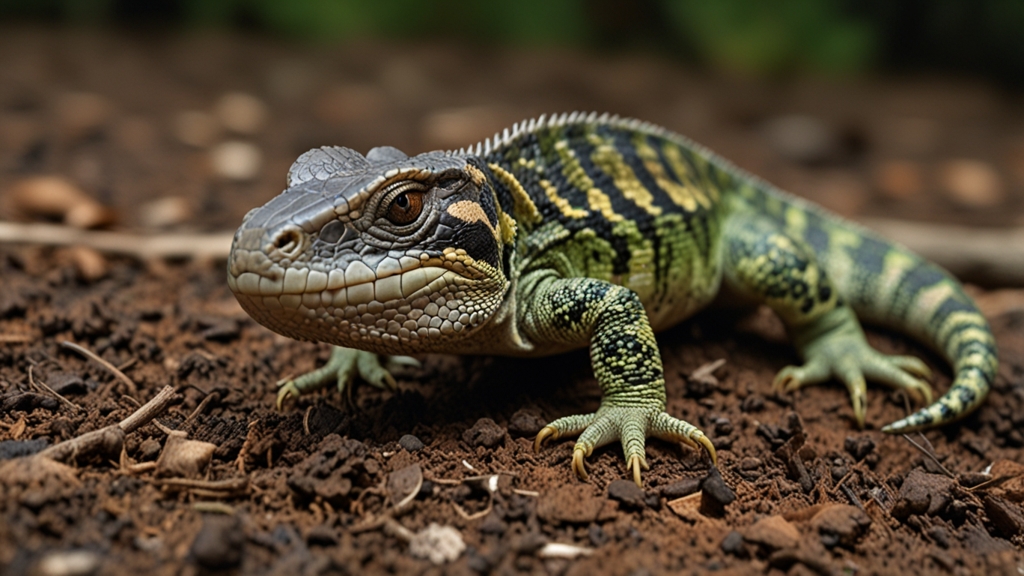Why Every Child Should Learn About Reptiles
Reptiles, a diverse group of cold-blooded animals that includes snakes, lizards, turtles, and crocodiles, have fascinated humanity for millennia. Yet, in the modern-day classroom, their significance is often underestimated. Educating children about reptiles is not only an engaging way to connect with nature but also imbues them with essential scientific knowledge and environmental responsibility.
Stimulating Curiosity and Engagement
Reptiles captivate the imagination due to their unique physical characteristics and behaviors. They appear in various myths, stories, and even modern media, creating a sense of wonder and curiosity among children. This curiosity can be an excellent gateway to the broader world of biology and ecology. By learning about reptilian habitats, diet, and physiology, children can develop a more profound appreciation for the complexity of life on Earth.
“To engage a child’s curiosity is to open the door to endless knowledge.”
Understanding Biodiversity and Ecosystems
Reptiles play vital roles in their ecosystems; for instance, they can control pest populations and act as both predators and prey in the food chain. Through studying reptiles, children can grasp important ecological concepts and appreciate the intricate balance of nature. This understanding is crucial in a world where biodiversity is threatened by factors such as habitat destruction and climate change.
When children learn about the various species of reptiles and their specific roles, they gain insights into the interdependence of all living organisms. A snake, often feared or misunderstood, can become an example of how predators help maintain the ecological balance by controlling the population of rodents and insects.
Encouraging Environmental Stewardship
Learning about reptiles fosters a sense of environmental stewardship. Awareness of the challenges reptiles face, such as habitat loss, pollution, and illegal pet trade, empowers children to participate in conservation efforts. Through hands-on activities like building turtle nesting sites or participating in citizen science projects, children can actively contribute to the well-being of these creatures and their habitats.
“Awareness leads to action, and action leads to preservation.”
Promoting Respect and Empathy
Reptiles are often met with fear and misunderstanding. By educating children about these creatures, we can dispel myths and promote a culture of respect and empathy for all animals. Understanding that snakes, lizards, and other reptiles are not monstrous but are fascinating creatures with unique adaptations can reduce irrational fears and encourage a more harmonious coexistence between humans and wildlife.
Improving Scientific Literacy
Studying reptiles can improve children's overall scientific literacy. Topics such as evolution, adaptation, anatomy, and physiology become more tangible when explored through the lens of reptiles. Dissecting a snake or observing the behavior of a lizard can bring textbook concepts to life, making scientific learning more interactive and enjoyable.
Moreover, reptiles often serve as model organisms in research. By learning about how reptiles have been used to study genetics, behavior, and even medicine, children can appreciate the real-world applications of scientific knowledge.
Conclusion
Incorporating reptile education into the curriculum offers numerous benefits. From sparking curiosity and promoting biodiversity awareness to fostering empathy and improving scientific literacy, reptiles are an excellent educational resource. By learning about these fascinating creatures, children not only become more knowledgeable but also develop a deeper connection to the natural world, encouraging them to become responsible and engaged stewards of the environment.
“Knowledge is the first step towards conservation; understanding reptiles helps preserve them.”
Ultimately, teaching children about reptiles is an investment in the future—not just of these misunderstood creatures, but of the planet as a whole. The lessons learned extend far beyond biology, touching on responsibility, empathy, and the importance of nature conservation.








